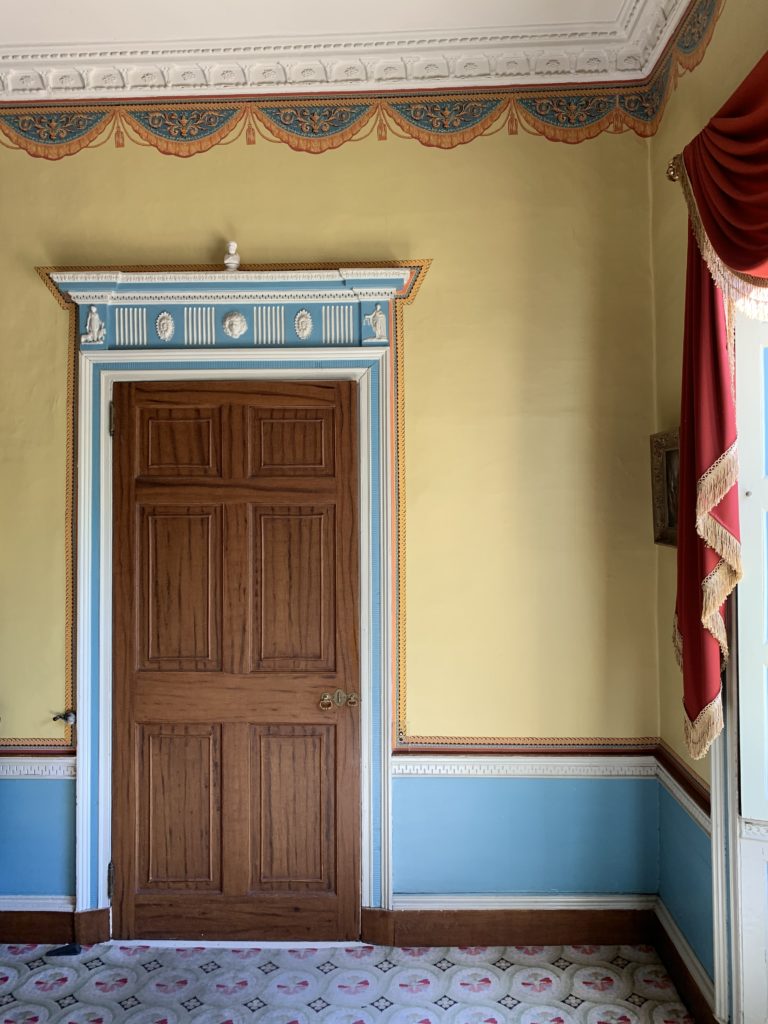 Otis House
Otis House
Restoring the Dining Room II

Wallpaper
In the 1916 examination of the Otis House dining room, no Federal era wallpaper remains were found on the walls. For both the parlor or dining room, curators chose to use plain papers with wallpaper borders. Rooms decorated with solid colored wallpaper, called “plain papers”, and embellished with a wide variety of colorful borders were fashionable in the period when Otis House was built. The border in this room is a reproduction of a paper from Montpeiler, the home of Revolutionary War hero, Henry Knox, in Thomaston, Maine. This was a logical choice as Knox was a contemporary of Otis and his house was likely designed by Charles Bulfinch, in 1794. The “festoon” design of the border gives the appearance of a flat textile swag embellished with an embroidered urn and foliate design. This paper was likely made in Boston and was purchased from Moses Grant.
Carpet
Removal of Victorian carpets in this room revealed rough, unfinished pine boards commonly used under wall-to-wall carpeting. In the Federal era, urban households, especially wealthy ones like the Otises, were likely to possess wall-to-wall carpets. By 1790, classically-inspired carpets like this reproduction had become popular.
Paint
Determining the original paint colors for the room required scientific analysis and involved taking samples from areas where the paint was thickest and then analyzing them chemically and microscopically. Most rooms in the house were painted with variations of a light bluish-green color with detail picked out in white, much like fashionable Wedgwood ceramics.
The doors in this room are grain painted to imitate mahogany. The fanciest room, the drawing room on the second floor, were the only doors made from solid mahogany.